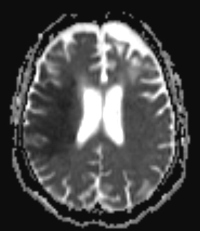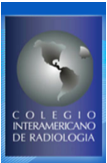Incidental diagnosis of an acute cerebrovascular event on 99mTc- HMDP bone scintigraphy performed due to suspicion of amyloidosis
DOI:
https://doi.org/10.53903/01212095.252Keywords:
Accidente cerebrovascular, Imagen radioisotópica, DifosfonatosAbstract
Acute cerebrovascular event (ACE) is a neurological deficit caused by a central nervous system (CNS) injury secondary to insufficient supply of oxygenated blood to the brain. It can be hemorrhagic or ischemic, with the latter being more common. It affects approximately 16 million people worldwide each year, and in Latin America, an incidence of 35-183 per 100,000 habitants has been reported. The main risk factors are smoke, alcohol, hypertension, and family history. The most commonly used diagnostic method is brain computed tomography (CT), and the most accurate one is brain magnetic resonance imaging (MRI). There are few documented cases of increased uptake in bone scintigraphy with meta-stable technetium-99m (99mTc) and hydroxymethylene diphosphonate (HMDP) in the infarct area. The physiopathological mechanism behind this increased uptake observed in infarcts is uncertain, but there are some hypotheses, with the most accepted one being related to intracellular calcium metabolism implicated in ACE. We present the case of a 78-year-old woman with left hemiparesis and central facial paralysis, who underwent brain CT and MRI, leading to the diagnosis of an ACE. Subsequently, a bone scintigraphy was performed using 99mTc-HMDP, revealing increased uptake of the radiopharmaceutical in the infarct area.
Downloads
References
Vega Arango M, Medina A. Evento cerebrovascular agudo isquémico - Stroke. En: Radiología en Urgencias. Medellín: Editorial CES; 2018. pp. 87.
Ramírez Yepes JC, González Ramírez AI, Roldán Cubies WE, et al. Accidente cerebrovascular visualizado en gammagrafía con Tc-99m MDP, un hallazgo extraóseo inusual. An Facultad Med (Univ Repúb Urug). 2019;6(2):72-74. https://doi.org/10.25184/anfamed2019v6n2a6
Lizano Salas M, Mc Donald Molina C, Tully Sancho S. Fisiopatología de la cascada isquémica y su influencia en la isquemia cerebral. Revista Médica Sinergia.2020;5(8):e555. https://doi.org/10.31434/rms.v5i8.555
Ludhiadch A, Sharma R, Muriki A, Munshi A. Role of calcium homeostasis in ischemic stroke: A Review. CNS Neurol Disord Drug Targets. 2022;21(1):52-61. https://doi.org/10.2174/1871527320666210212141232
Lin Z, Meng Z, Wang T, Guo R, et al. Predicting the onset of ischemic stroke with fast high-resolution 3D MR Spectroscopic Imaging. J Magn Reson Imaging. 2023;58(3):838-47. https://doi.org/10.1002/jmri.28596
Kannivelu A, Padhy AK, Srinivasan S, Ali SZ. Extraosseous uptake of technetium-99m methylene diphosphonate by an acute territorial cerebral infarct in a classical biodistribution pattern. Indian J Nucl Med. 2013;28:240-2. https://doi.org/10.4103/0972-3919.121974
Bermo M, Behnia S, Fair J, et al. Review of extraskeletal activity on Tc-99m methylene diphosphonate bone scintigraphy and value of cross-sectional and SPECT-CT imaging correlation. Curr Probl Diagn Radiol. 2018;47(5):324-32. https://doi.org/10.1067/j.cpradiol.2017.07.009

Downloads
Published
How to Cite
Issue
Section
License
Copyright (c) 2024 Revista Colombiana de Radiología

This work is licensed under a Creative Commons Attribution-NonCommercial-ShareAlike 4.0 International License.
La Revista Colombiana de Radiología es de acceso abierto y todos sus artículos se encuentran libre y completamente disponibles en línea para todo público sin costo alguno.
Los derechos patrimoniales de autor de los textos y de las imágenes del artículo como han sido transferidos pertenecen a la Asociación Colombiana de Radiología (ACR). Por tanto para su reproducción es necesario solicitar permisos y se debe hacer referencia al artículo de la Revista Colombiana de Radiología en las presentaciones o artículos nuevos donde se incluyan.







